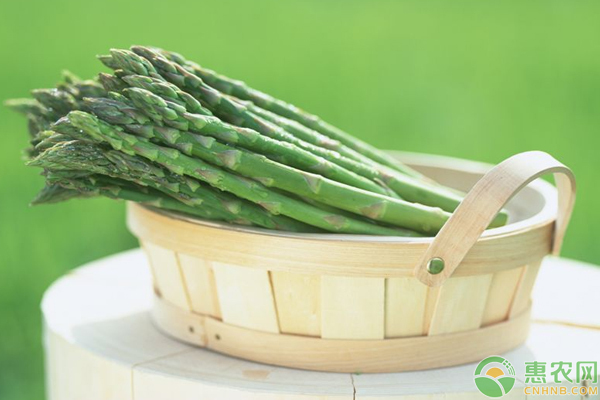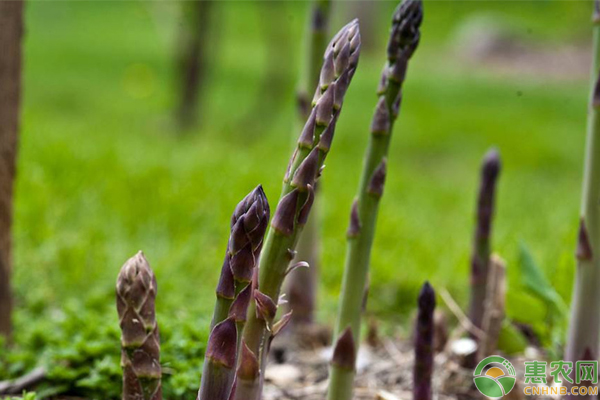Asparagus is one of the most efficient economic crops. Its planting cost is low, the planting method is simple, planting can be harvested for more than 10 years, and the yield per mu can reach 10,000 yuan. It has a good planting prospect. The following is a detailed high-yield planting field management of asparagus. Skills, you can refer to planting.

    1. Cultivate strong seedlings
In order to capture the high yield of asparagus, in addition to the selection of excellent varieties, the nursery should be established for seedling cultivation. The optimum construction period is June, and the seedling time is about 3 months. Starting from the cockroach, the row spacing is 16.5 cm × 16.5 cm.
    2, land transplant
Asparagus grows in the loess sandy loam. Before transplanting, it should plow the loose soil several times and remove the impurities in the soil. After fully drying (time 1-2 months), the farmer manure or superphosphate, 30 kg of chlorine Potassium. After the manure is applied, the plough is poured, and the cake fertilizer is added with water for 8-10 days, then mixed with superphosphate and potassium chloride, and applied to the ditch (depth 30-40 cm) to cover the soil and then planted.
    3, reasonable close planting
The most suitable seedling stage is autumn planting, which has short harvesting time and high survival rate. The row spacing of the seedlings was 25 cm x 160 cm. When planting, divide the root into two halves, fix it in the colony of the planting ditch, the scale buds are facing the midline of the sputum, then cover the soil 5-6 cm, compacted and set the root water.

    4, seedling stage fertilizer
If the seedlings are planted, the irrigation should be carried out by means of furrow irrigation. Apply the first fertilizer 20 days after planting. 40-60 days after planting, fertilize once every 25-30 days, apply 25-50 kg of compound fertilizer or 10-20 kg of urea plus 6-12.5 kg of potassium chloride. Fertilize once every 25 days from 4 months after planting to before harvesting.
    5, harvesting period of fertilizer water
Fertilize once every 15-20 days during harvesting, applying 20 kg of urea and 12.5 kg of potassium chloride per mu. At the same time, we must pay attention to the opening of the four sides of the ditch and the Tianzhong ditch, draining the water on rainy days, and watering on sunny days.
    6, fixed mother stem
About 5-6 months after planting, the seedlings will be the last batch of stems. When the stems are 0.8-l cm thick, the mother stems can be selected. Generally, 2-3 old maternal pests are selected. The stem can be removed and the rest removed.

    7. Prevention and control of pests and diseases
Common diseases of asparagus include stem blight and anthracnose. The stem blight can be sprayed with 70% methyl thiophanate 600 times solution or 40% carbendazim 500 times solution. The seedlings and seedlings are sprayed every 10-15 days, and the mother stems are sprayed once every 5-7 days. The prevention and treatment of anthrax can be carried out by using 70% mancozeb 500 times solution, or 75% chlorothalonil WP 600 times solution, or 80% anthrax defame WP 800 times solution.
    8, change seedlings
After 3-4 months of collecting bamboo shoots, the original seedlings begin to age. At this time, all the seedlings should be removed, leaving only the root potato, and then the ridges are fertilized and the potatoes are seeded. Generally, the seedlings are changed twice a year.
Asparagus is rich in nutrients and has good edible value. In recent years, the market demand is very large. Many growers rely on planting it to get rich. The above is about the high-yield planting management skills of asparagus. The parents who want to grow asparagus can learn from it. .
Virus Specimen Collection Tube
Inspection principle:
It can perform protein denaturation on fresh clinical virus samples to inactivate the virus, prevent secondary transmission of infection, and ensure the safety of transportation and testing personnel.
♣.Structural composition: Combination of cotton swab and transport medium (VTM).
♣. Product requirements:
The product should be airtight, avoid high temperature, avoid direct sunlight storage. It should be used in a clean, hygienic, pollution-free, and temperature-friendly environment.
♣, Storage conditions and validity period:
â‘ , the product should be stored in a clean, dry and ventilated environment,
②, the temperature is 5℃-35℃;
â‘¢, relative humidity <85%RH;
â‘£, product shelf life: 12 months.
♣. How to use
â‘ Before sampling, mark relevant information on the label of the sampling tube.
â‘¡. Sampling with the corresponding cotton swabs.
â‘¢ After the collection is completed, quickly put the cotton swab into the collection tube, break the part higher than the sampling tube, and tighten the tube cover.
â‘£. For the specific sampling method, please refer to the following:
a) Nasal swab Gently insert the sampling head into the nasal cavity, stop for a while and then slowly rotate to exit, immerse the collected specimen in the Xiangxiang solution, break the excess part and discard it, and tighten the sampling tube cover.
b) Pharyngeal swab: Wipe bilateral pharyngeal tonsils and posterior pharyngeal wall with the sampling head, immerse the collected specimen in the sampling solution, break off the excess part and discard it, and tighten the cap of the sampling tube.
c), Mycoplasma Chlamydia, Ureaplasma specimen collection
Male: Insert the sampling head into the urethra about 2cm and rotate, stay for a while and then exit, and immerse the collected specimen in the sampling solution.
Female: Wipe the mucus of the cervical orifice, insert the sampling tip into the cervical canal for 1-2 cm for sampling, immerse the collected specimen in the sampling solution, break off the excess part and discard it, and tighten the cap of the sampling tube.
♣. Precautions
1. After the virus is collected, the disposable sampling swab should be completely inserted into the preservation solution, so that the virus can be retained to the greatest extent possible.
â‘¡ The collected specimens must be sent for inspection in time.
â‘¢. It is forbidden to use products with damaged packaging and expired validity period to prevent pollution.
This single-use Virus Sampling Tube is used for in vitro diagnosis. It cannot be used for human or animal oral or external use. If swallowed, it may cause serious events; it is irritating to eyes and skin. If it is not splashed into the eyes, rinse with water.
Virus Sampling Tube,Virus Specimen Collection Tube,Viral Transport Tube,Saliva Virus Sampling Kit
Jilin Sinoscience Technology Co. LTD , https://www.jilinsinoscience.com